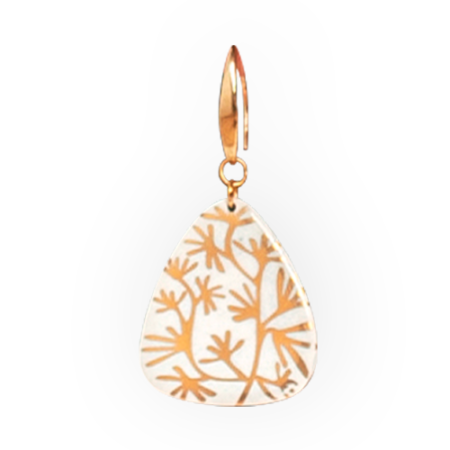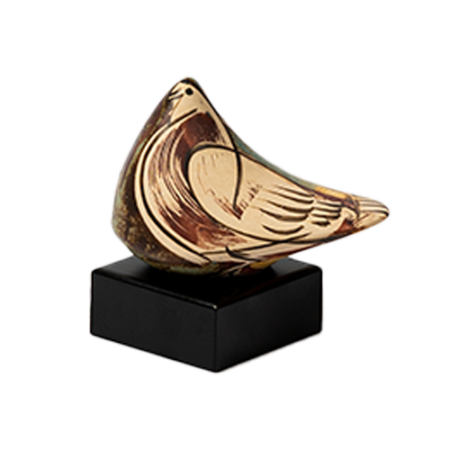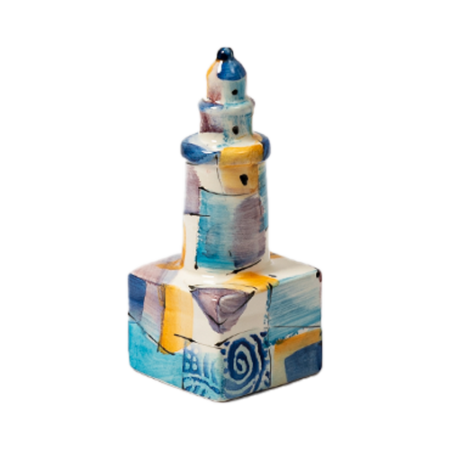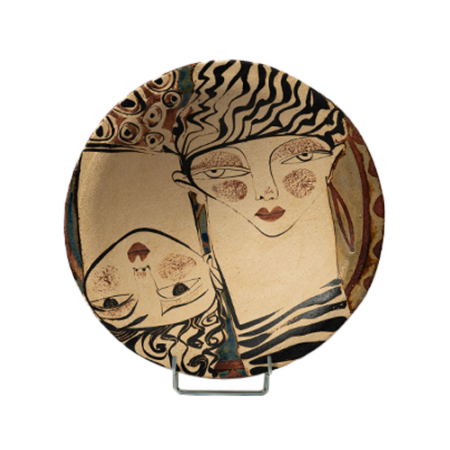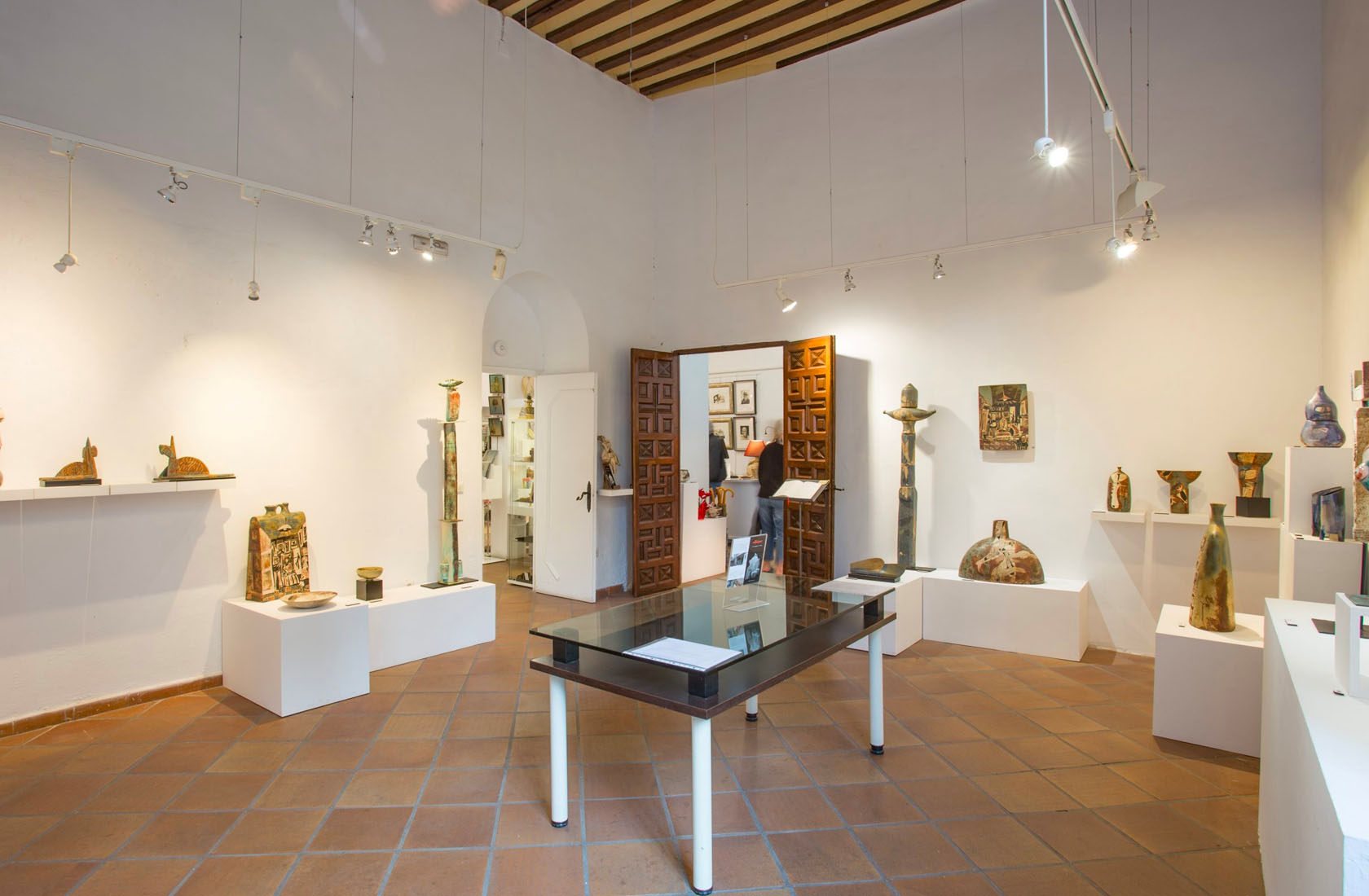The impression of the human being. The precision of poetry.
Romero’s ceramics are filled with contemporary poetry by authors such as Ángel González or Chantal Maillard. Written by the author himself like a mantra, in a spiral, like lines of small ants of letters that follow a path, including the figures that walk over them. The work speaks silently to the viewer, inviting them to stop and look and interpret.
Human beings are not precise, or they are rarely precise. For a natural individual endowed with feelings and outbursts, it is difficult to cool the heart and hit the target. Definitely, we are “made” to feel joys and horrors with the greatest intensity. This fragility (or strength, depending on how you look at it) comes to mind when I observe the protagonists of Cayetano Romero’s work. The soul of his characters has been definitively struck, leaving them with a scar that they will have to learn to live with. Their injuries have probably been caused by that lack of precision or balance that, as I said, characterizes us: recognizing the exact moment in which one must withdraw, abandon, for example, is not easy, but doing it in time can save us some pains.
Luckily, these little individuals find comfort and relief. In Romero’s work there is always room for hope, a future that is based on two pillars, these are very precise: time and poetry. Although the perception of time always depends on the person who experiences it, its passage acts with surgical precision, erasing regrets and making us forget… “Pain is never permanent,” stated Saint Teresa of Jesus. The artist incorporates time into his work when his “little men” walk through impossible gorges, run or, on other occasions, revolve around a center. They think while they walk and in this “peripatetic” or “Aristotelian” action something is unraveled inside them. The other part, poetry, is fundamental in the work of Cayetano Romero. The little inhabitants of this city turn to poetry like someone looking for the exact ointment to quell the burning of the wound. The words of Ángel González or the musical poems of Leonard Cohen have inspired part of his production and represent a means of healing for his protagonists. Poetry is still a mirror in which one projects one’s insecurities, fears and miseries, the reflection that it returns to us are the insecurities, fears and miseries of others. And this is how art heals us, saves us.
Regina Pérez Castillo
Cayetano Romero is an artist from Huelva, painter, sculptor and ceramist. He was professor at San Telmo Art School in Malaga. Since he was little he was interested in pottery and poetry and studied arts in Seville. He has completed his studies in Barcelona and Italy and has held numerous exhibitions. In 2001 he made the statuette, “la Biznaga” with which the winners of the Malaga Spanish Film Festival are awarded.


